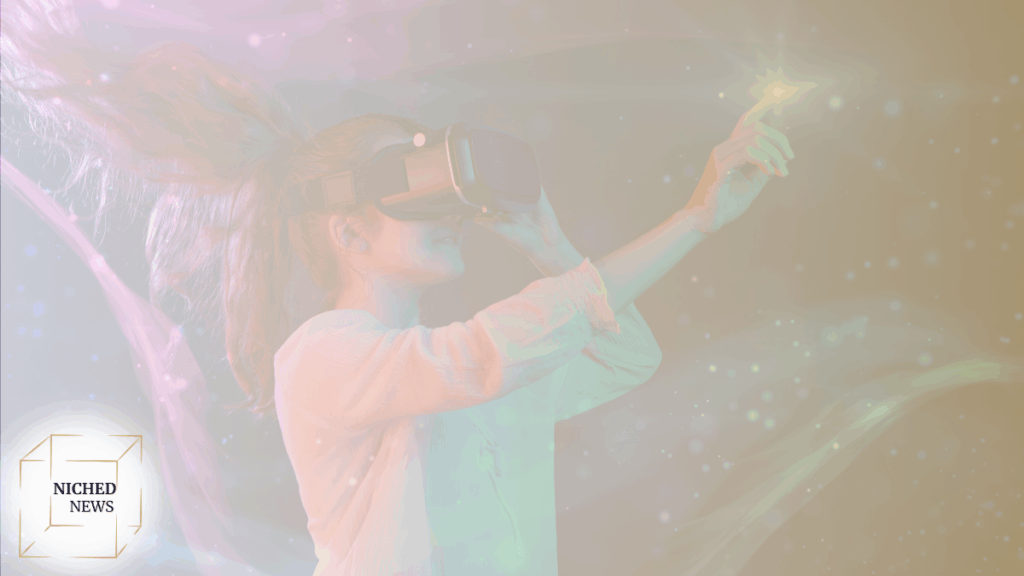Niched Summary:
Think the metaverse is dead? Forget the headlines—audiences have moved on from the initial metaverse buzz, smaller micro-worlds are booming, powered by communities, creators, and niche platforms.
Why it matters: These virtual spaces are reshaping how people interact, play, and build immersive experiences online.
Think the Metaverse Is Dead? These Micro-Worlds Say Otherwise
After the hype faded, so did the headlines. The tech world seemed to collectively agree: the metaverse is dead. But scroll past the corporate pivots and broken promises, and you’ll find something surprising—virtual worlds are alive and thriving, just not in the way most expected.
Instead of one big, unified metaverse, creators are building a network of micro-worlds: smaller, community-led spaces where creativity, connection, and immersion are thriving.
The Shift: From Mega-Verses to Micro-Worlds
Early visions of the metaverse—glossy, corporate, and centralized—missed the mark. Users didn’t want to live in a digital mall. What they wanted was meaningful, interest-driven spaces where they could co-create and explore.
That’s exactly what platforms like Roblox, VRChat, and Fortnite Creative are offering.
These aren’t just games. They’re toolkits for building entire worlds—whether that’s a virtual concert hall, a cozy reading nook, or a simulated city where users set the rules.
And they’re booming. Roblox alone reported over 70 million daily active users in early 2025, with creators generating everything from fashion experiences to coding simulators.
Why Micro-Worlds Work
Here’s why users are choosing smaller digital spaces over one-size-fits-all metaverses:
- They’re personal. Micro-worlds let users tailor their environments to specific interests—think D&D taverns, digital nightclubs, or zen gardens in VR.
- They’re community-first. These worlds grow through word-of-mouth and creator communities, not corporate roadmaps.
- They empower creators. Tools like Unity, Rec Room Studio, and Horizon Worlds’ Creator Monetization give people the freedom to build—and profit from—their own content.
Instead of being passive users, people are becoming world-builders, architects, and curators.
***Related article: Virtual Reality Gaming Market Enters New Dimension
Brands Are Learning to Play Small
Even brands that once chased the “big metaverse” are pivoting to micro-worlds.
Nike now has Nikeland in Roblox, a gamified environment that lets users play sports-themed games and try on virtual sneakers. Netflix has experimented with horror-themed VR events. Coachella created immersive stages in Fortnite, timed with their real-world festival.
These experiences integrate directly into existing communities, which makes them far more memorable (and shareable).
A Creator Economy, Reimagined
The success of micro-worlds ties directly into the rise of the creator economy. Platforms are finally offering monetization tools, including:
- Tip jars and digital goods sales (VRChat, Rec Room)
- Sponsorships and partnerships (Roblox, Fortnite)
- Asset and avatar marketplaces (Ready Player Me, Spatial)
This allows for sustainable, passion-driven economies where people aren’t just consuming content—they’re building livelihoods around it.
Not Without Challenges
Of course, this new era of micro-worlds isn’t without friction:
- No universal identity or inventory. Your avatar and digital goods often don’t travel between platforms.
- Discovery is fragmented. It’s hard to know where the best new worlds are popping up.
- Moderation varies wildly. Some platforms struggle to keep toxic behavior in check.
Developers are actively addressing these issues. Tools like Ready Player Me aim to solve cross-platform identity, and AI-powered moderation is making digital spaces safer and more inclusive.
What’s Next for the Metaverse – think the metaverse is dead?
People are letting go of the dream—but that’s a good thing.
What’s replacing it is something richer, more accessible, and more aligned with how we already behave online: fragmented, passion-led, and community-powered.
Micro-worlds are becoming the real fabric of the metaverse, and they’re giving people the freedom to create, connect, and play on their own terms.
External Source:
🔗 Roblox Creator Economy Stats (Roblox Corp)



